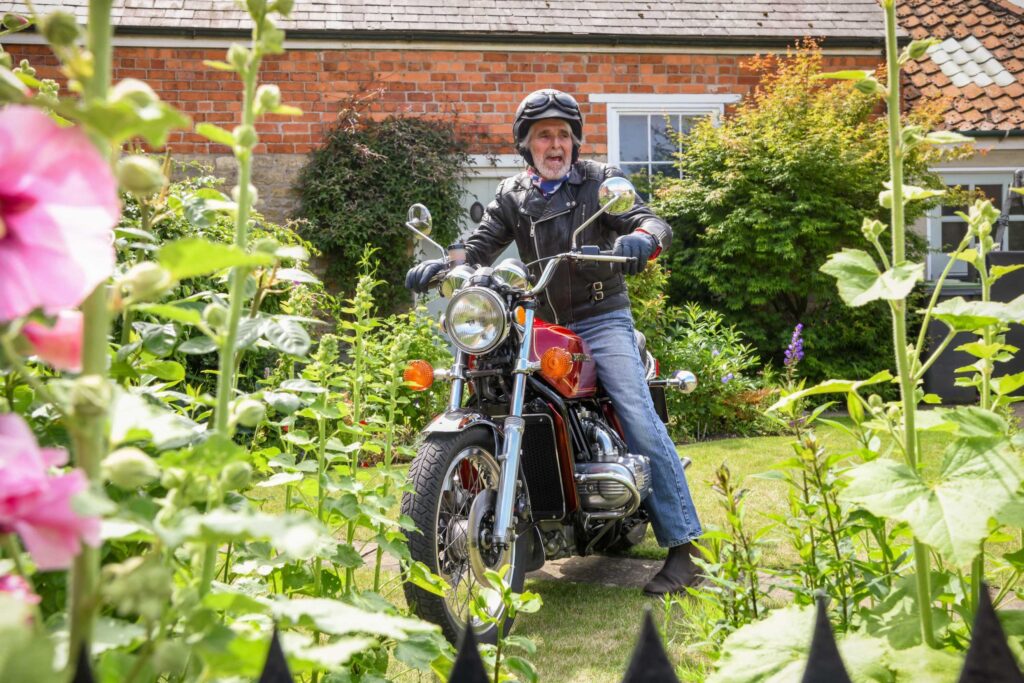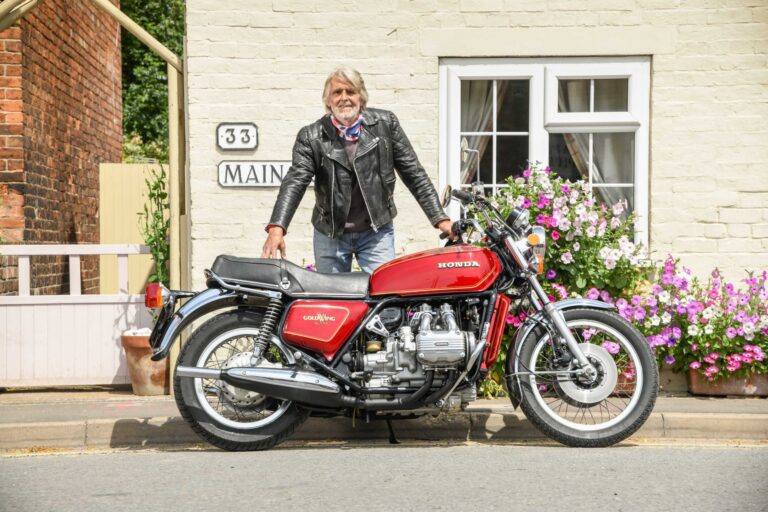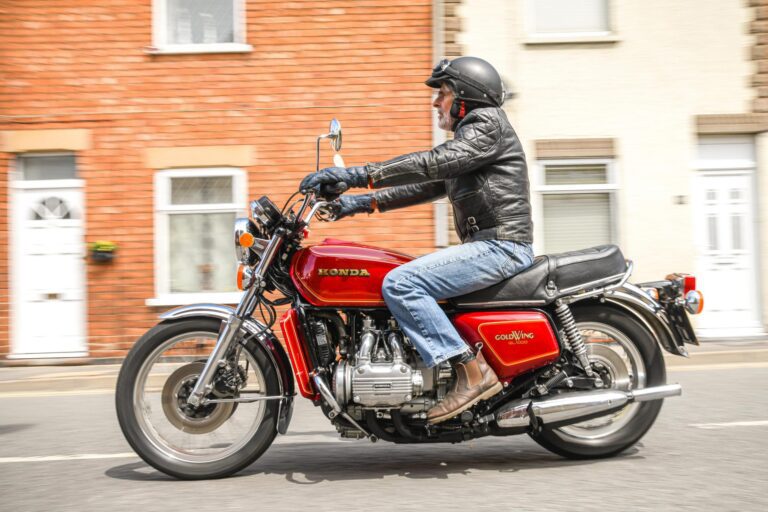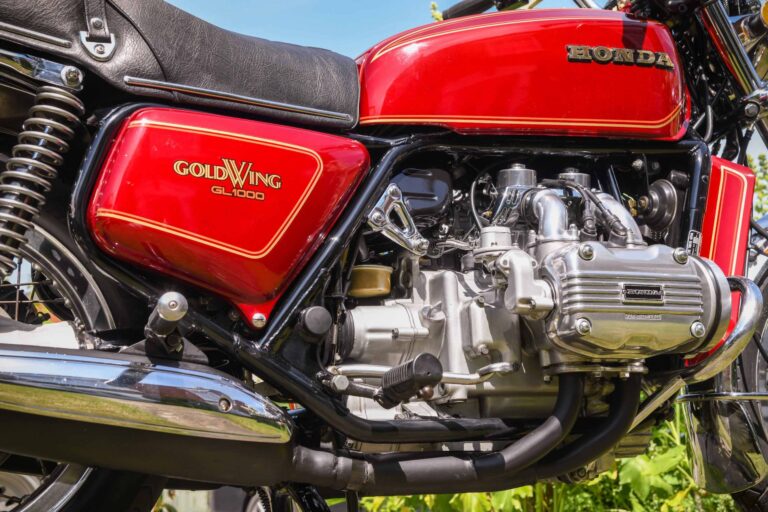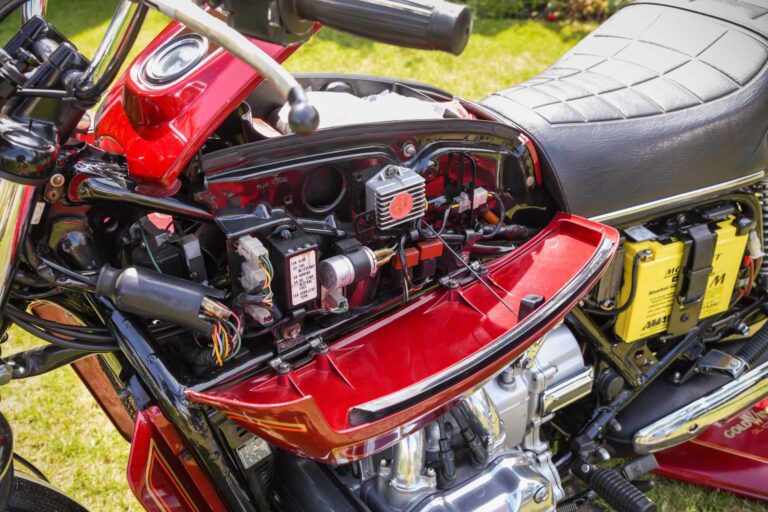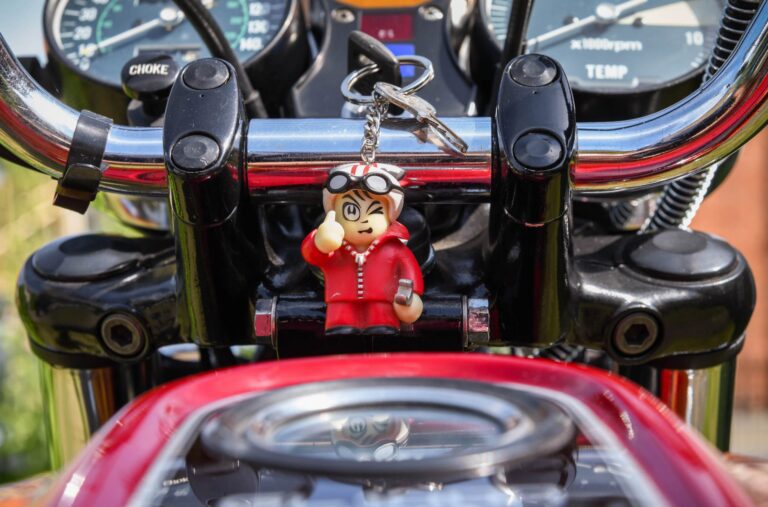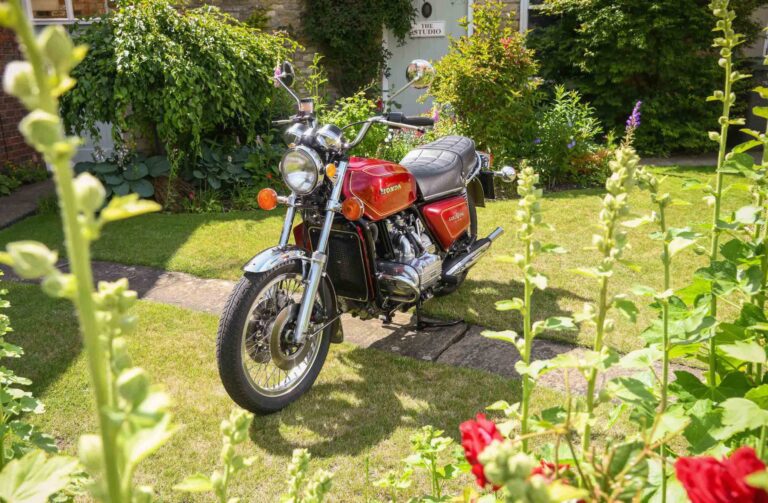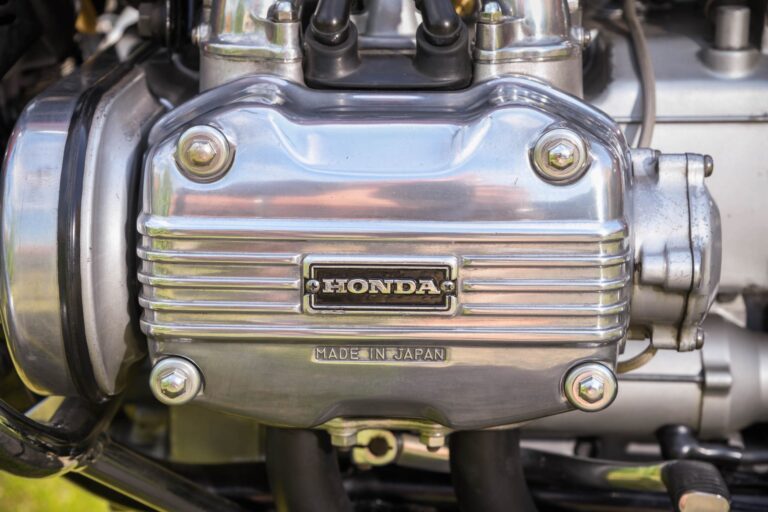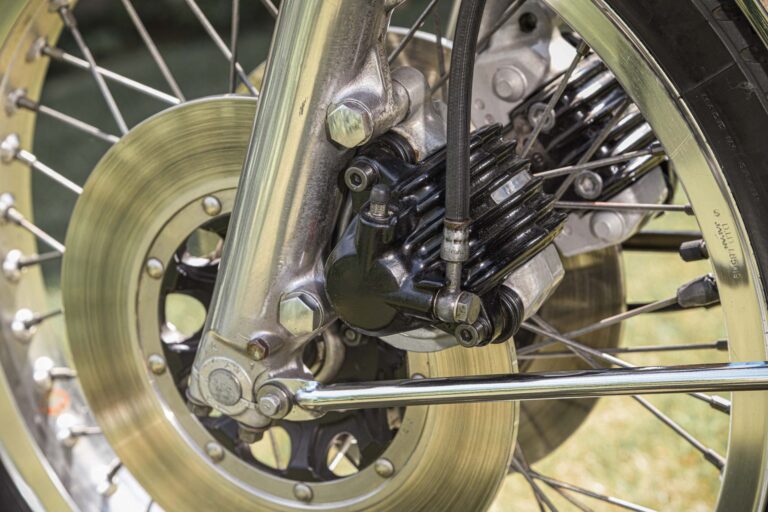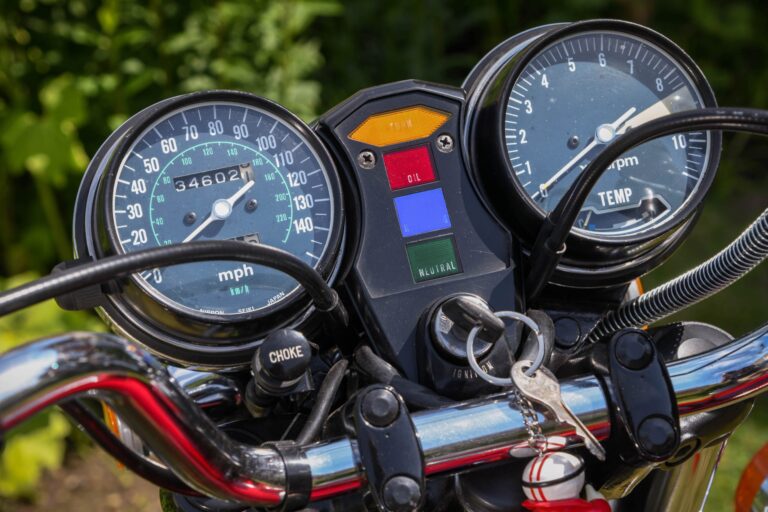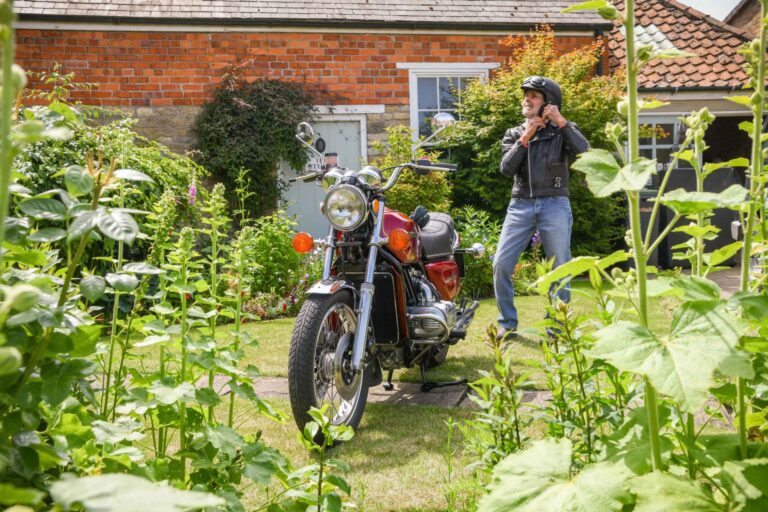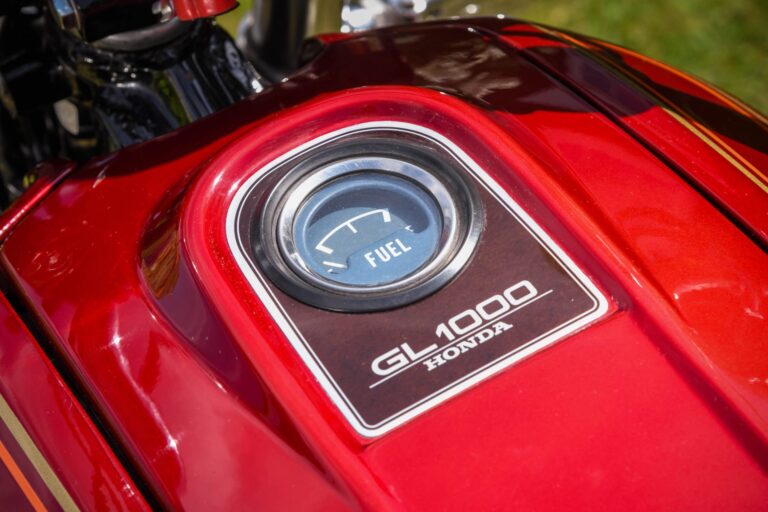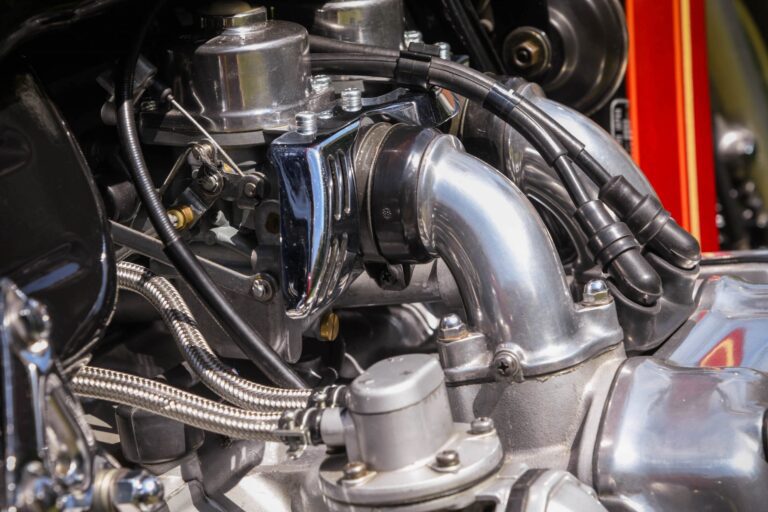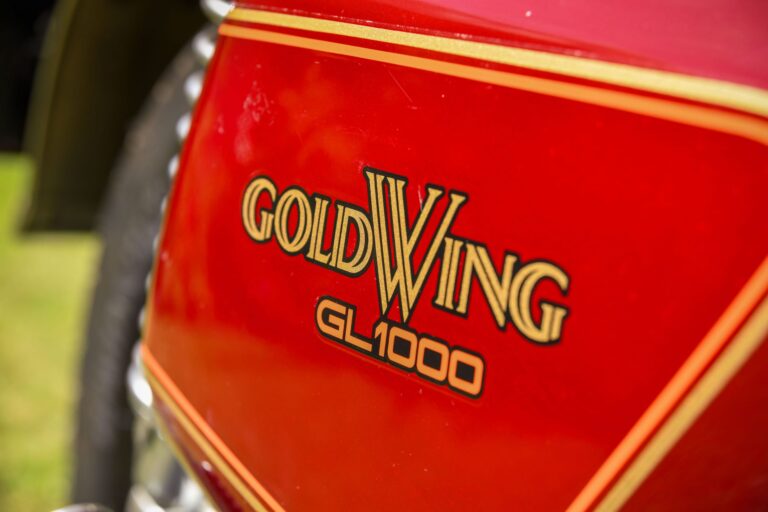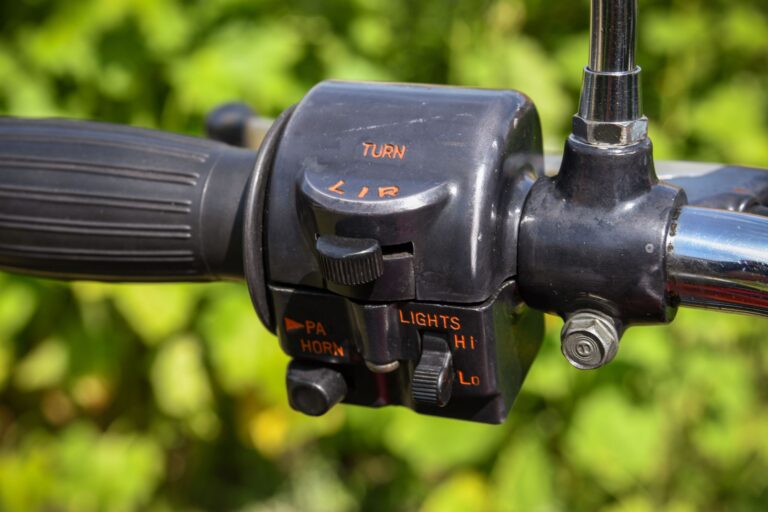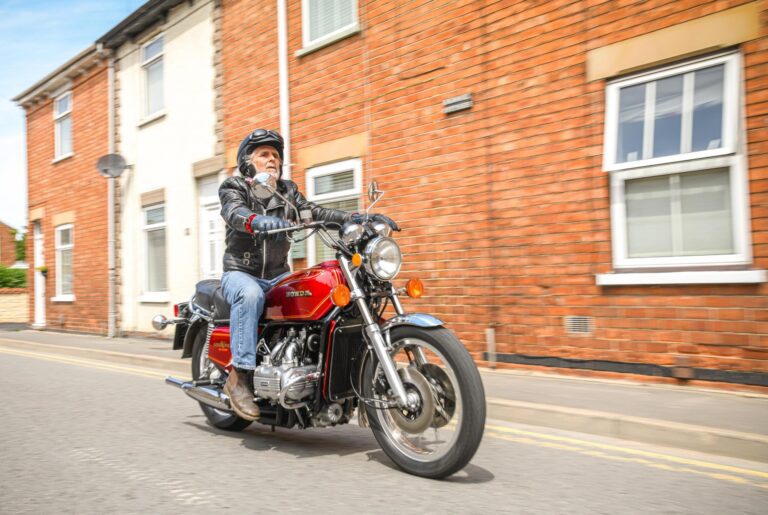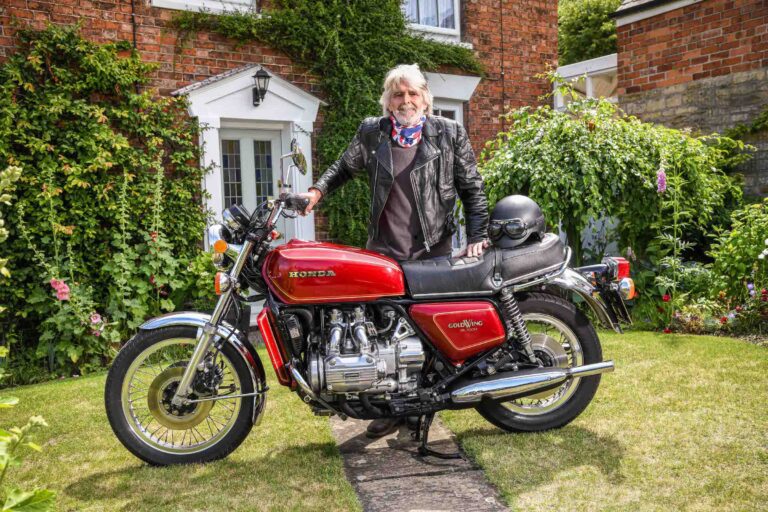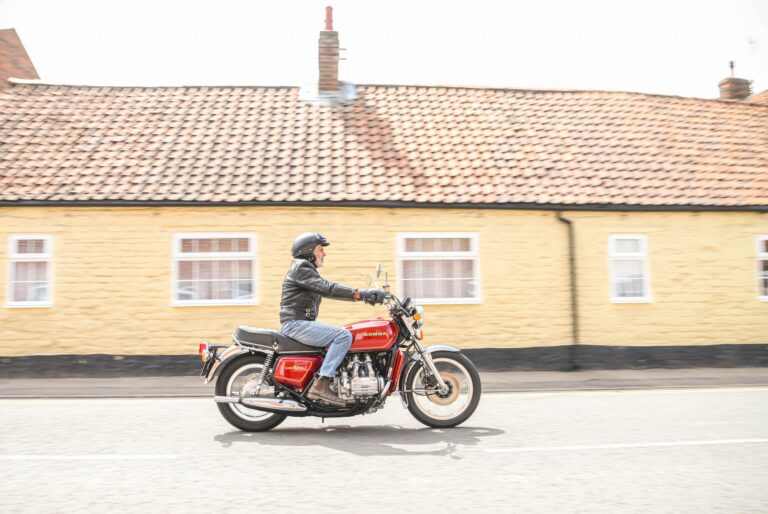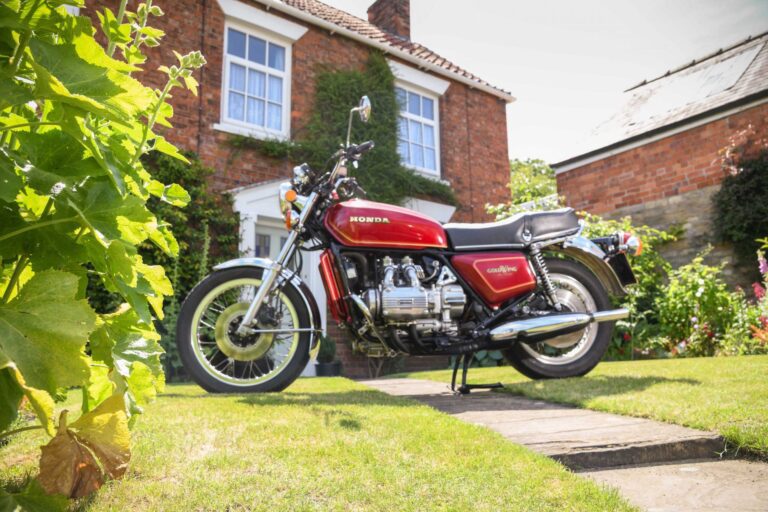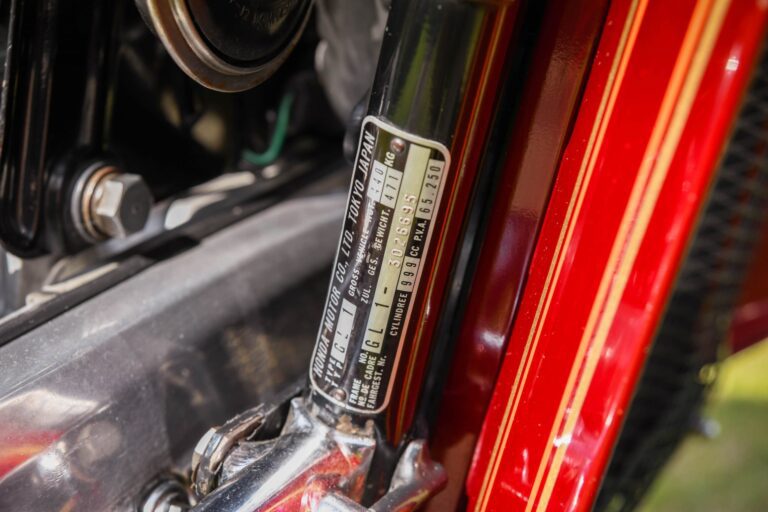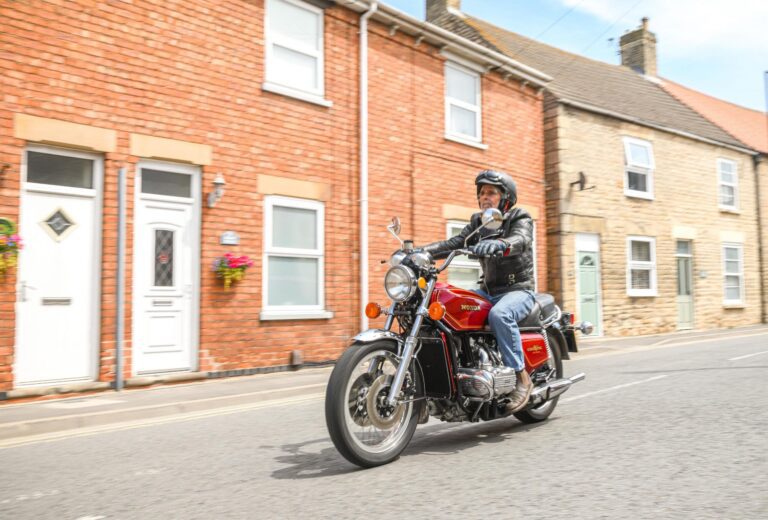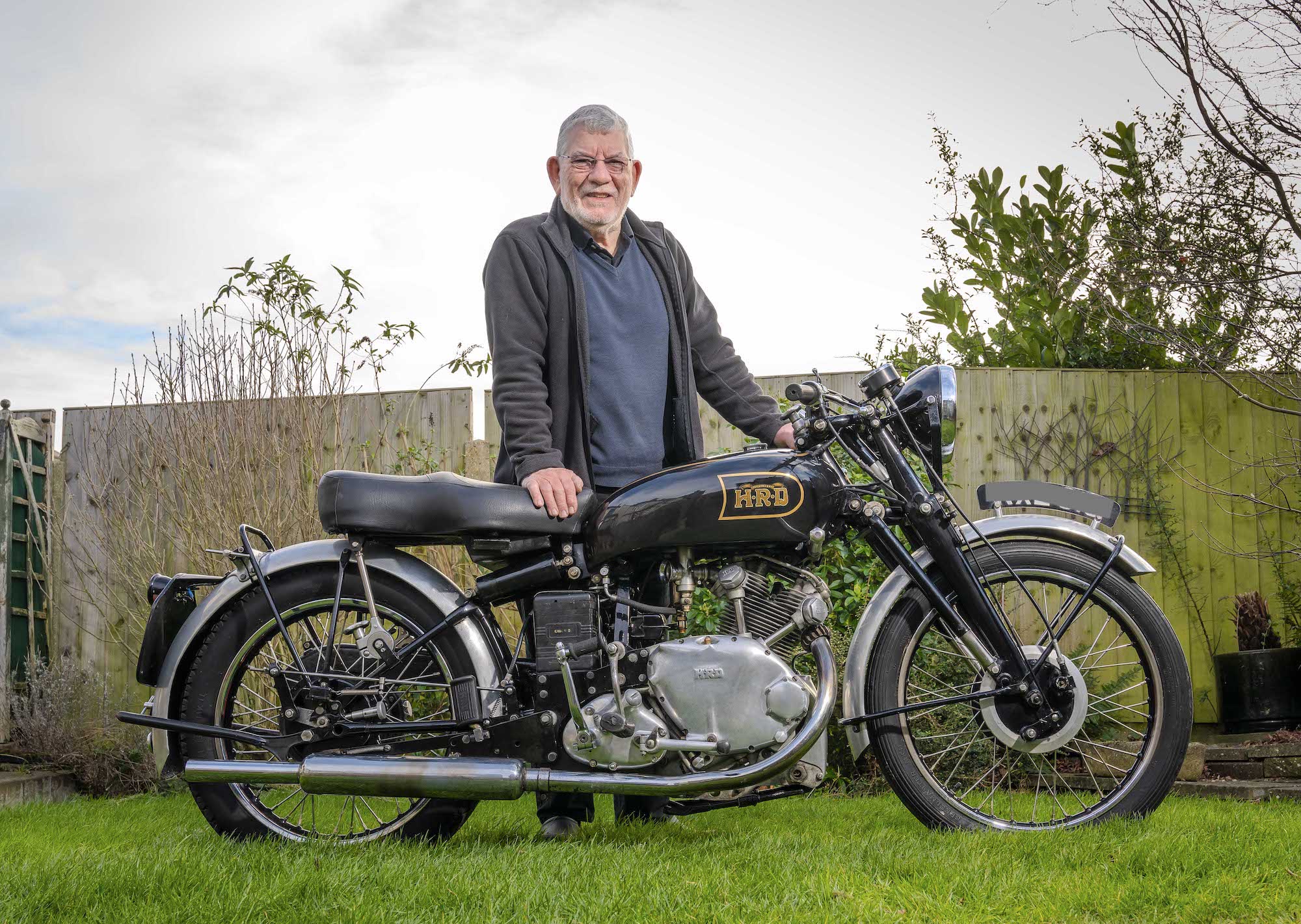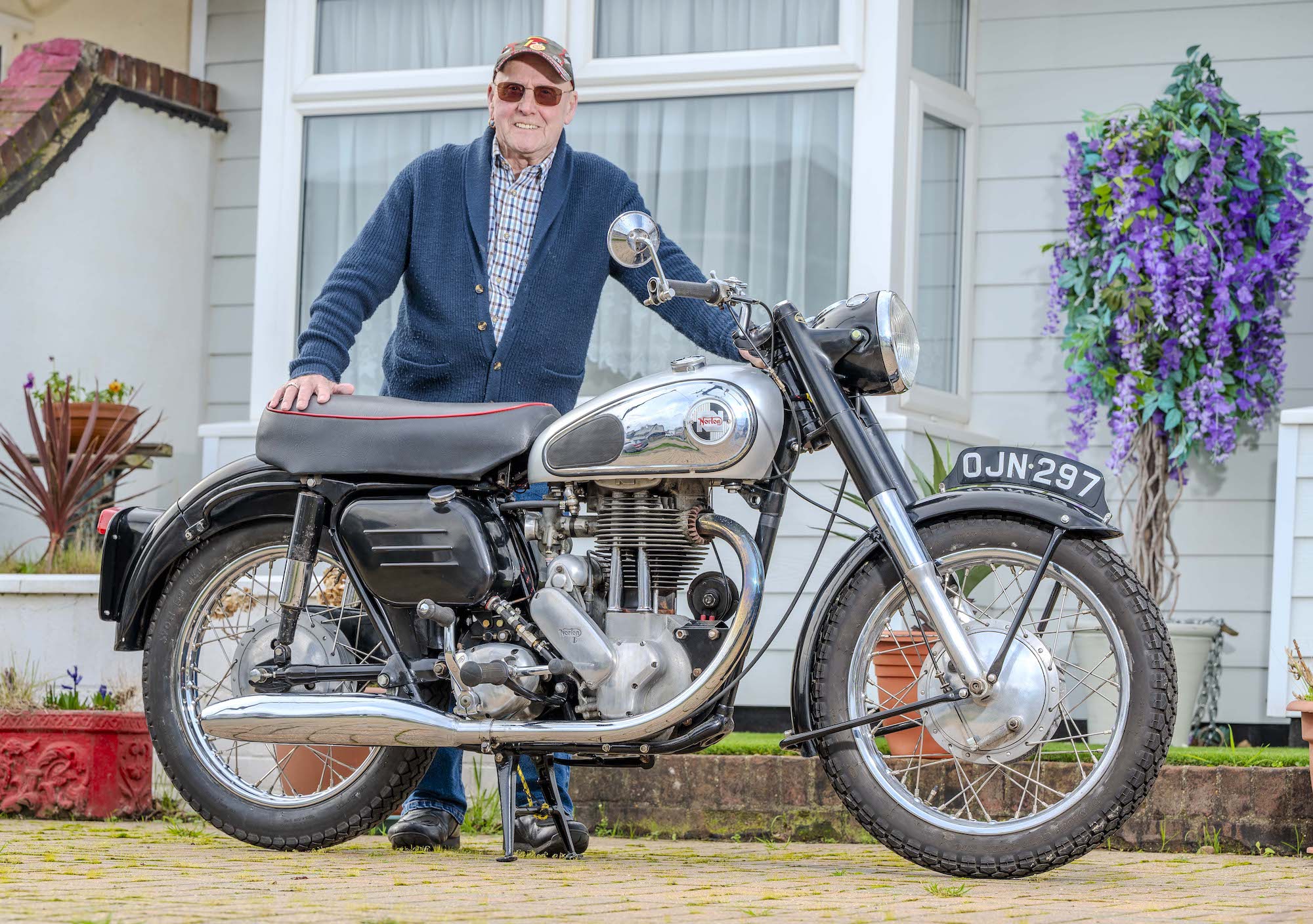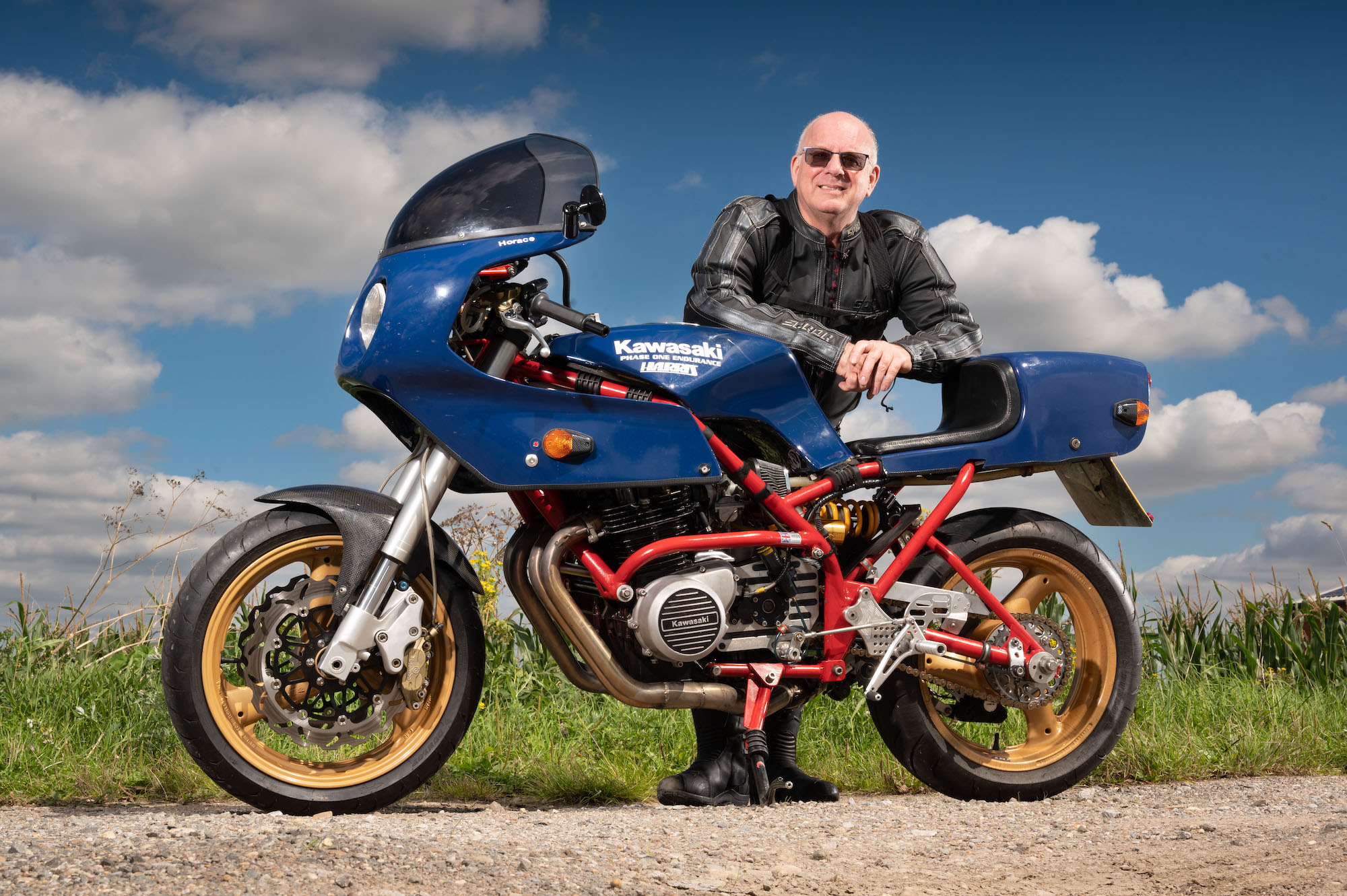This is the Honda Gold Wing in its purest form.
No fairings, no inbuilt luggage panniers, no stereo, no sat nav, and no armchair-style pillion seat.
And, according to Pete Berladyn, the bike’s owner for the past 35 years, it is all the better for it.
“Just a big lump of an engine in a typical looking motorcycle frame,” he says of the Honda GL1000.
Postwar British bike style
“I don’t like the later type Gold Wings. This looks like the style of an older British bike from the postwar years, and I just love it.
“The Japanese were ahead of their time with the motorbikes they produced in the ‘70s. They virtually put the British bikes out of business.”
Pete was 30 when he bought the Honda in 1985, a return to biking after more than a decade on four wheels.
More than three decades on, his bond with the bike runs deep.
“I would die first before I sold it,” he says, before reluctantly accepting the sheer weight of the Gold Wing would one day be too much for him.
“I suppose there will be a time in the future where I will have to seriously consider selling it. As soon as you’re on it riding down the road it’s not an issue, but moving it around, pushing it back up the slightest of inclines, it starts getting heavy.
“I remember in years gone by, I could be sat astride it and put it up on its centre stand quite easily; I couldn’t do that anymore. It feels heavier and heavier as the years roll by.
“One day I will have to sell it and be happy it’s gone to a good home.”
Biking is in the blood
Biking is in Pete’s blood. Some of his earliest memories are of riding around his native Lincoln with his father in the late ‘50s.
“I grew up on the petrol tank of my father’s bike,” he remembers. “We used to ride up the main road in Lincoln, me aged about four or five on my dad’s tank with his arms around me.
“He ran a combination unit so he always had big bikes, until he progressed to a three-wheeled Reliant and finally passed his car test in the mid ‘60s.”
Pete wasted no time in getting his own motorcycle, riding a 125cc Francis-Barnett around the garden at the age of 12 or 13.
A Cyclemotor followed, then a 175cc Triumph Tigress scooter.
“I’d just be running around my father’s place,” he says. “I had a course in and around the apple trees in the orchard.
“The first two-wheeled machine I had on the road was an Li150 Lambretta when I was 16, and I belonged to Lincoln Poachers Scooter Club.”
Other bikes came and went, including brief flirtations with a 175cc Honda and a Raleigh Runabout moped.
“In those days you had a bike, had it on the road, then somebody wanted to buy it so you sold it and went bought another one,” he says. “A lot of the time I used to buy them off a friend, fix them, run them for a month or two and sell them on.
“Eventually I had a small Triumph Tiger Cub, then I passed my car test at 17 and left bikes alone. Once you had a car it was more useful.”
First car was a fiver
Pete saved up £5 from his paper round to buy his first car, a Ford Anglia he and his father rebuilt together.
“The engine was in bits in the boot,” he remembers. “We put that together, my father resprayed it and I drove that for the first year or so before it finally ended up in the scrapyard. I rolled it late one Friday night…”
It was followed by an Audi 100LS, an Austin 1100, a Vauxhall Victor Estate and a Rover 2000TC that he kept into the 1980s.
By then, Pete was earning decent money in the oil exploration industry, and his attention was finally turning back to motorbikes.
After leaving school at 17, he worked for two years as a trainee civil engineer on £9 a week before signing up for the Volunteer Commando Squadron of the Royal Engineers, based in Plymouth but travelling widely.
There he trained as a land surveyor, leaving after five years to use his skills in seismic exploration for the oil and gas industry, first as an employee and then as a freelancer.
His was a nomadic existence, working overseas much of the time, returning to the UK for a few weeks before heading off again, working throughout Africa and Europe, as well as three years in Australia and stints in India, and Bangladesh.
Great experience in the Arctic
“I spent six months up in the Arctic in Spitsbergen in an area known as Svalbard,” he says. “It was a very good job, and for me it was a great experience.”
It was on his return from Spain in 1984 that he first set eyes on the Gold Wing, which was owned by a friend and next door neighbour.
“By then I was financially sound, and I said ‘when you part company with it, I want to buy it’,” says Pete. “He came to me in ‘85 saying he was going to buy a Yamaha FJ1300 and wanted to part company with the Gold Wing, so I bought it off him for £1,000 and here it still is today.”
Manufactured in 1977 but first registered two years later, the late K2 model Gold Wing had already been through multiple owners and suffered something of a hard life.
“I’m convinced it had spent a lot of its time stored outside in the weather,” he says, standing outside himself as we chat in his pretty garden in a Lincolnshire village.
“The seat had been changed already, the exhaust had been changed and there were little specks of rust here and there. It seemed to have had a bit of a hard life, for some of its years anyway.”
Restoring the Honda Gold Wing
Pete immediately set about tidying up the Honda, which he describes as “a bit tatty here and there”.
“I loved the bike straight away – it was an easy bike to ride and, as heavy as it is, it was well-balanced, and it’s got the power, you can just open the throttle up and go,” he adds.
“In the ‘70s it was one of the fastest bikes on the road, in terms of top speed.”
Over the years, just about every part of the Honda – apart from the engine – has been removed, cleaned or repaired, and put back on.
The fuel tank, which had rusted inside, was replaced early on, while the bike was treated to a third seat about 15 years ago.
“There were little faults, and slowly, bit by bit, you end up going round the whole bike, always replacing things with genuine Honda parts,” he says.
“The Japanese did a wonderful job. Every little thing is held together with little screws and nuts and bolts and you can pull everything apart. And you can clean things up, and put them back together again.”
Having covered about 20,000 miles in its first six years on the road, the Honda has added only another 13,000 under Pete’s 35-year ownership, largely thanks to his long spells working overseas.
“If I was working in this country I would take the bike to work, park it up and ride it back at the weekend,” he says. “But that didn’t last very long because you can’t guarantee the weather in this country, so I just went back to driving to and from work in the car.
“I did take it across to a job in France for five or six months and rode it to and from my place of work there near Reims and also down at Auch, near Toulouse. It did a couple of thousand miles while it was away.”
European road trip on the Gold Wing
By far the longest journey was a three-week European road trip in the late ‘80s.
“I took the bike all the way to Gibraltar and back again,” he says. “We went down the west coast of France, over the Pyrenees, through central Spain, down to the south coast and came along the coast road back up into France, up the west coast of France and back to the UK.
“I clocked up about 5,500 miles, and there wasn’t a single issue with the bike at all. We had a pair of saddle bags draped over the back seat, a luggage rack with another sports type bag strapped on with bungees. It just plodded along as you’d expect it to.
“It’s never let me down. The only problem on the road was with a battery that had come to the end of its life and wouldn’t hold a charge, and I had to bump start it.”
In recent years, the Honda has been restricted to local runs on sunny days, the longest a 105-mile charity ride last year in aid of a brain tumour support group through the Lincoln Classic Motorcycle Club.
“Sometimes I’ve done no miles between the MOTs, which I’ve always kept up even though it’s now exempt,” says Pete, who keeps busy in semi-retirement doing building work and pea harvesting.
“The longest time it didn’t move was three or four years while I was working on this property.”
Three more bikes have joined the Honda in the garage over the years, a 1968 Triumph 500 twin, a 2003 Yamaha XT, and a Puch Minicross Super moped.
Lockdown labours of love
All four have been given a little extra attention over more than three months of lockdown as Pete, like many of us, adapted to having more free time than usual.
During this time, he managed to locate a genuine, rust-free Gold Wing exhaust system to replace his ailing pipes, all the way from California.
Finding original parts for a classic Gold Wing is neither easy, nor cheap.
“I found a place called NHC Panels in Yorkshire, who do an exact copy of the original exhaust for the GL1000 for £750,” he says. “They had sold all the ones they’ve manufactured in the past, and they haven’t got round to putting together another batch.
“I found these on the US eBay site. The cost to me to get them imported with all the taxes was £450. You couldn’t buy them in this country, not in that original, perfect condition.”
With the Honda back in tip top condition, Pete was planning to enter it into the classic club’s concours event, scheduled for this summer.
“It was meant to go last year, but I ended up taking the Triumph because I was waiting to get these exhausts,” he says.
“This year’s event was meant to be in June or July, but it won’t happen because of Covid. I’m hoping they’ll hold it later in the year.”
Undressed Gold Wing is a rare sight
An undressed Gold Wing is, says Pete, a rare sight on the roads today.
“You don’t see many early ones, and you do get people looking at it,” he adds. “When they realise it’s a V plate, they realise how old it is, that it’s nice and clean and there’s enough chrome on to make it look nice and shiny. It certainly turns people’s heads as you ride up and down.”
To back it up, the postman passes comment on his daily round, as Pete reflects one final time on what makes the bike special, and why he’s never been able to let it go.
“Having been around every square inch of it, getting to know its intricacies, there was no way I was ever going to part with it,” he says.
“It was an improving asset to me and I could never replace that with another bike because it just looks like the style of an older British bike, if you like, with its false petrol tank.
“I look at it and I know where I’m looking and what’s behind there and what’s inside there.
“It will be the last of my bikes to go. I’ll keep looking after it, keep changing the oil. It’s only done 33,000 miles so it’ll go on and on and on.”
